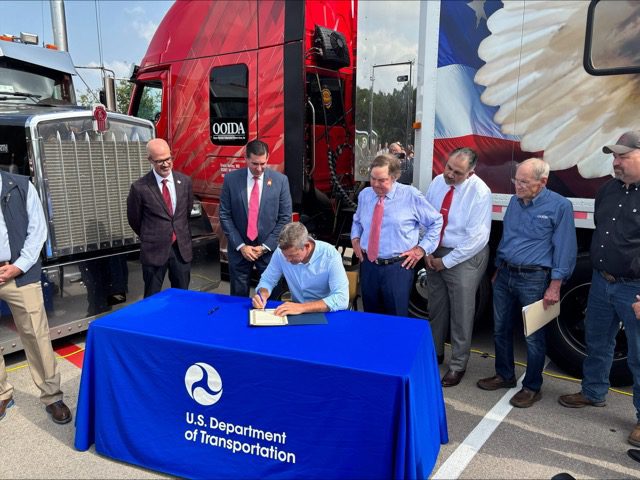
FMCSA Enforcement of English Proficiency for Commercial Motor Vehicle Drivers
Recently the FMCSA has instructed all law enforcement to adhere to and enforce the Code of Federal Regulations § 391.11 (b)(2) General qualifications of drivers, which requires all commercial motor vehicle drivers subject to Federal Motor Carrier Safety Administration authority i.e. operating vehicles in excess of 10,000 lb. GVWR as follows:
“Can read and speak the English language sufficiently to converse with the general public, to understand highway traffic signs and signals in the English language, to respond to official inquiries, and to make entries on reports and records;”
This requirement must be met without the aid of tools to facilitate communication such as interpreters, I-Speak cards, cue cards, smart phone applications, and On-Call Telephone Interpretation Services.
Drivers encountering law enforcement through roadside inspections and other instances who fail to meet these qualifications may be put out of service. If the driver holds a CDL, the CDL may be revoked.
To assist companies with screening drivers to insure they meet the above regulations, FMCSA offers the following guidance:
Guidance: Because 49 CFR § 391.11(a) prohibits a motor carrier from requiring or permitting a person to drive a CMV unless that person is qualified, a motor carrier should assess a driver’s qualifications, including the ability to comply with the ELP requirements of 49 CFR § 391.11(b)(2).
Motor carriers may conduct this assessment using various methods. The assessment should include processes to evaluate whether the driver is able to sufficiently communicate with law enforcement officers (e.g., during a roadside inspection) and to understand highway traffic signs that they may encounter while driving.
FMCSA recommends that a motor carrier manager conduct a driver interview in English and include inquiries that would show whether the driver could answer questions related to:
1. The origin and destination of a recent or planned trip.
2. The amount of time spent on duty, including driving time and the record of duty status (or logbook).
3. The information contained in the driver’s license.
4. Information contained in shipping papers (actual or sample shipping papers, including hazardous materials shipping papers, if applicable) for the load transported/to be transported.
5. Vehicle equipment subject to inspection.
Because the driver interview is a means of establishing the driver’s ability to respond to official inquiries by speaking English sufficiently, the manager should inform the driver that the driver should respond to the inquiries in English. Tools to facilitate communication such as interpreters, I-Speak cards, cue cards, smart phone applications, and On-Call Telephone Interpretation Service should not be used during the driver interview, as those tools may mask a driver’s inability to communicate in English.
FMCSA also recommends that the manager explain to the driver that the ELP regulation requires the driver to sufficiently understand and explain the meaning of U.S. highway signs. The manager should select various signs from the Federal Highway Administration’s Manual on Uniform Traffic Control Devices (MUTCD) (https://mutcd.fhwa.dot.gov/) as well as examples of dynamic message signs the driver may encounter while operating a CMV and ask the driver to explain the meaning of the selected signs. The driver’s explanation may be in any language, provided the manager is able to understand the driver’s explanation.
